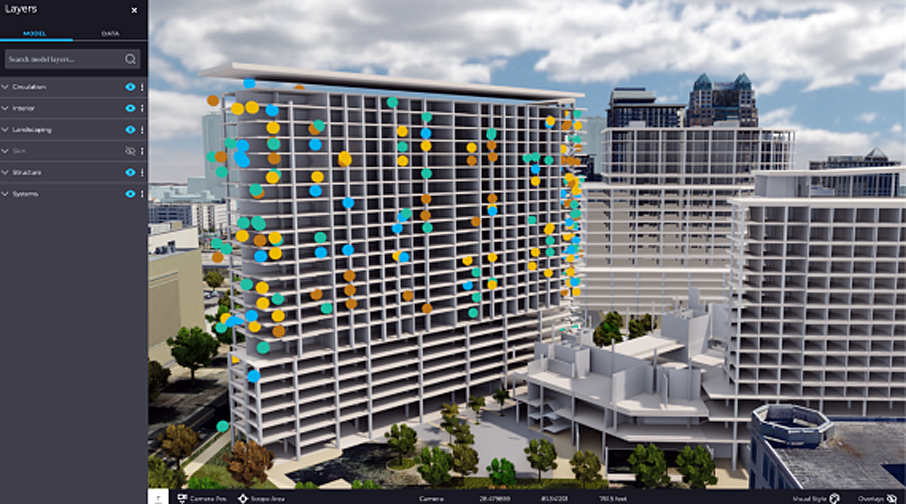Digital twins will transform cities, says ABI
- August 16, 2021
- Steve Rogerson

Digital-twin technology is expected to lead the way in transforming cities, savings billions in running costs and helping towards net-zero targets, according to ABI Research.
Its report says the cost benefits alone could be worth $280bn by 2030 through using digital twins for more efficient urban planning.
“Digital twins will become the ultimate tool for city governments to design, plan and manage their connected infrastructure and assets in an efficient and cost-effective way,” said Dominique Bonte, vice president at ABI Research. “Cost savings can be obtained in key areas, such as energy and utilities, transportation, safety and security, and infrastructure such as roads and buildings. However, urban digital twins also offer many other advantages in terms of supporting and improving sustainability, circularity, decarbonisation and the overall quality of urban living.”
The report details potential efficiencies across a wide range of asset categories and use cases:
- First-time suitable designs of buildings and other physical infrastructure avoiding expensive modifications after completion
- Energy-efficient building designs increasing solar capacity and yielding lifetime energy savings
- Resilient and safe infrastructure designs reducing policing and emergency response costs
- Optimised designs of utilities, streetlight and surveillance networks to achieve the same coverage target with less capex
- Design of Covid-19 proof buildings to deliver healthcare savings
Digital twins can also enable efficient e-government through seamless exchange of data with citizens for mediation purposes.
One supplier of urban digital-twin technology is Chicago and London-based Cityzenith, which featured in this research alongside Siemens, Microsoft and Engi.
“As an architect by trade, I know how inefficient and over budget the built environment has been over the last 30 years or more, often causing delays in completion and inefficient use of materials due to the industry’s lack of data and technology,” said Cityzenith CEO Michael Jansen. “It’s a huge global problem as we seek a more efficient and sustainable model for our urban planning, and construction must catch up with the pace of emissions reduction in other industries such as manufacturing.”
Digital-twin technology is accelerating to provide solutions to these problems. Modelling by software such as Cityzenith’s SmartWorld OS can manipulate huge amounts of data to enable smooth and accurate right first time and on time construction on new projects and help retrofit older construction to cut emissions now and in the future.
“During the next 12 months, we will partner with at least ten international cities, to integrate our SmartWorld OS digital-twin platform,” said Jansen. “We have also signed a major international contract to use SmartWorld OS to manage carbon emissions in other cities as part of the race to zero and movement towards a more sustainable and cost-effective energy transition.”
Digital-twin technology has been named one of five top tech growth sectors, including nanotechnology, genomics, biotechnology and AI. According to the World Nano Foundation, these five sectors will enjoy a combined growth of more than 400% over the next five years. The digital-twin market alone is predicted to grow from $3.1bn to $48.2bn by 2026, according to Markets & Markets.
Bonte added: “While the cost-saving advantages of digital twins allow cities to achieve fast RoIs, the increasingly complex nature of connected and smart urban infrastructure, especially in view of future smart urban concepts, will simply mandate the deployment of digital twins as critical, holistic management tools, similar to the role they play in other industries like manufacturing.”




